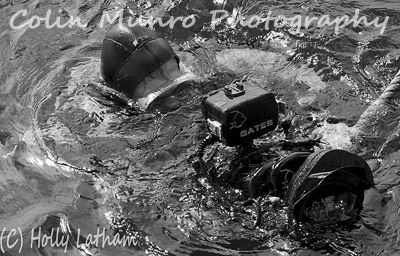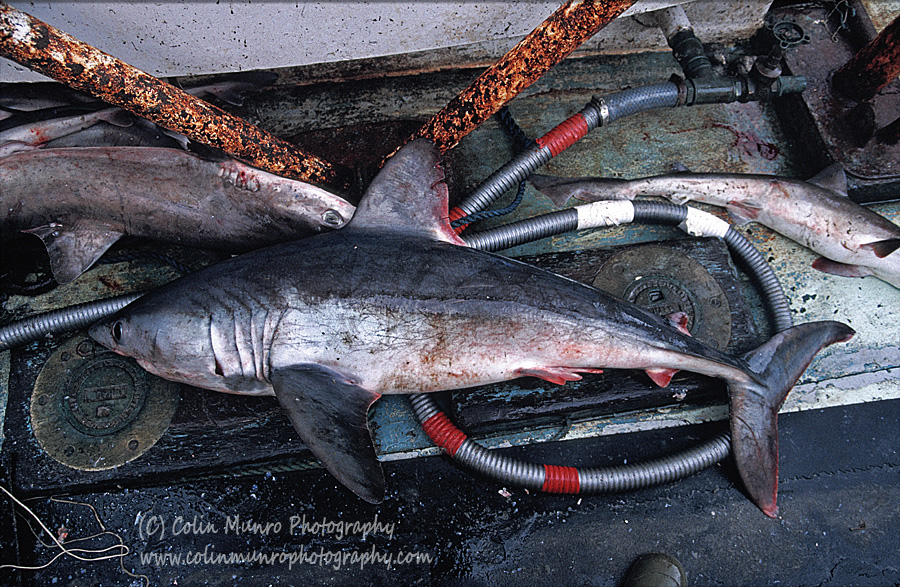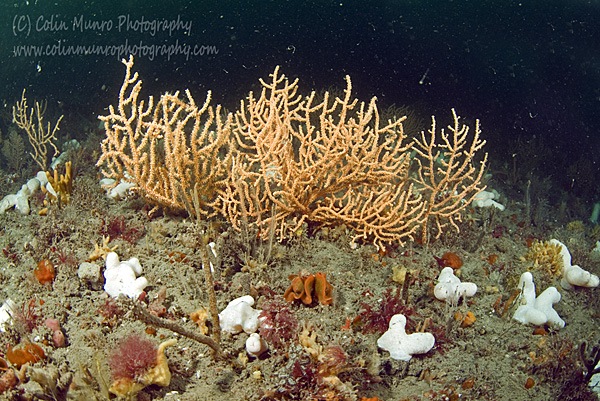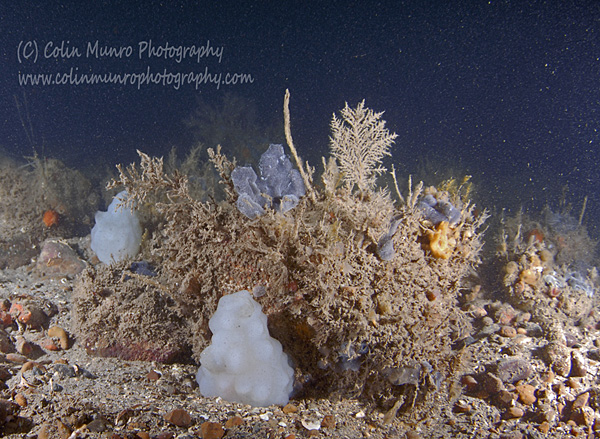The grind, or grindadrap, is a non-commercial, community based whale and dolphin drive in the Faroe Islands. It is a bloody, some say barbaric, affair. Most notable among the groups campaigning for the grind to stop are the organisation Sea Shepherd. Earlier this month, Sea Shepherd UK wrote to 16 cruise ship companies, asking them to stop visiting the Faroe Islands until the grind stops.

The grind, or grindadrap, is a non-commercial, community based whale and dolphin drive in the Faroe Islands. Around 840 pilot whales and white sided dolphins are killed every year. This is done by local boats driving them in to designated beaches (there are 26 around the Faroe Islands. Grinds occur spontaneously, when pilot whale pods are sighted. It can only be initiated by sightings from land. The whales are driven by small boats on to the beaches, where local people gather and kill the whales using a specially designed lance that severs the spinal chord. The meat is not sold, but distributed equally and freely to all households in the Faroes. It is bloody, some say barbaric, affair. There are widespread calls in Europe and North America for it to be halted. Most prominent among the groups opposing the grind is Sea Shepherd, who have an ongoing campaign, Operation Bloody Fjords, to stop or disrupt the grind.
I was in the middle of writing a completely different blog when the topic of the Grind started resurfacing on social media posts. The post most frequently reposted, and commented upon, that I saw, was one from Sea Shepherd calling upon cruise ships to stop visiting the Faroe Islands until the Grind is stopped. Published on the Sea Shepherd UK website, this has been shared on Facebook and other social media platforms, as widely reposted and commented upon, including by several friends and work colleagues. In this, Sea Shepherd UK has written to 16 cruise ship companies (12th August 2019) calling on them postpone visits the Faroe Islands until the hunting of pilot whales and dolphins is stopped.
This is part of a larger campaign by Sea Shepherd UK, known as Operation Bloody Fjords, aimed at halting or disrupting the grind in the Faroes. This is something I have given a fair bit of thought to and so, at the risk of alienating quite a few people, I decided to write this blog.
So to firstly declare my own interest in this matter. I consider myself a conservationist; for most of my professional career I worked as a freelance marine biologist/environmental consultant. I have a particular interest in the effects of fisheries on the marine environment, having worked for over 20 years collecting data on the effects of benthic mobile fishing gear on seabed marine life and habitats, and working to establish no fishing zones and monitoring their effectiveness.
Secondly, I work – as a self-employed contractor, on small cruise ships and have more than once been to the Faroes on such ships (though this is entirely a personal blog and represents solely my own views).
Thirdly, I have witnessed a grind, in 2018, and have talked to quite a few Faroese about it the grind and their views on the subject.
I should also add I am no fan of Sea Shepherd, or their founder Paul Watson. I consider them overly aggressive and confrontational with little or no science behind their activities, largely ineffective in terms of conservation, and that the prime (often sole) beneficiary of their activities are the finances of Sea Shepherd and their media profile. Sea Shepherd also prominently bills itself as a conservation body, but nowhere in their letter to cruise companies, or on their website campaign information, do they mention conservation. The most obvious reason for this is that the grind has no real impact on the conservation of pilot whales and their campaign has nothing to do with conservation. But more of that later.
I am genuinely conflicted regarding the grind. There is no doubt that pilot whales and white-sided dolphins are highly intelligent social animals. So I absolutely do not like to see them killed. Re-posting and commenting on social media is quick and easy. It requires little effort and, unfortunately, often little thought. It can however have significant effect if done by a large number of people. For me, the core questions are proportionality, effectiveness and comparison of the action I am considering condemning with my own actions. We don’t want to spend our lives endlessly condemning things on social media to little effect, so it is a question of priorities – what is really important and what is not. Equally we should not be hypocritical: condemning things where our own personal deleterious impact is actually greater. With the Faroese pilot whale and dolphin hunt I believe the key questions are, sustainability and cruelty, so I will attempt to address these before returning to the question asked at the top of this blog.
Sustainability
The number of pilot whales killed annually in the Faroes is around 840 – since detailed records began over 300 years ago, and around 640 per year (2000-2017). All the science suggests this is a sustainable fishery. The Central and N.E. Atlantic population of pilot whales is estimated over 750,000 (Buckland et. al, 1989) although figure is now quite old. A more recent assessment of the Faroese pilot whale hunt (NAMMCO 2013) found that, for the grind to be sustainable, a population (in Faroese waters) of 50-80,000 pilot whales was required. The current estimation puts the Faroese population at over 100,000. Unless this is a significant overestimate, then the pilot whale hunt is sustainable, with around 0.1% being killed annually. The most recent study (Pike, et al, 2019) looking at data between 1987 and 2015, indicates that the pilot whale population in the North East Atlantic is relatively stable during this period, with no long term trend of increasing or decreasing.
This is not something to be considered lightly – few British fisheries, for example, could be considered anything like as sustainable. It is also one of the best regulated fisheries in the World. Each year every single whale or dolphin killed is recorded, along with location and species. Very few other fisheries have such accurate records.
If one compares the pilot whales grind to fisheries in the UK (which I am very familiar with) or other developed countries:
1. it does not destroy the seabed habitat and all animals living there – unlike many of our fisheries where one hour of fishing will devastate a vast area of seabed, often for decades;
2. there is normally no by-catch; many other fisheries kill far more non-target than target species, which are simply dumped back into the ocean.
Cruelty.
Cruelty is, almost by definition, a highly emotive issue, and not one easily quantified or compared. However, think about this hypothetical question.
Before being born you are given two choices for your life:
You will be born into captivity. You will be separated from your mother when still very young. If male, you will be castrated before puberty. You will never be allowed to live naturally, in a natural environment, forage naturally, eat a natural diet, live in natural family groups, mate and reproduce, care for your offspring. You will be slaughtered when a few months old. Your natural lifespan would have been 15-20 years.
Or
You will be born in a totally natural environment, surrounded by family members. Your mother will care for you, and as you grow you will play, be protected, and learn from other family members. You will hunt, feed, socialise, reproduce and raise offspring in a family group in totally natural conditions. You may live 45-50 years, all in a completely natural environment. Each year, there is a one in a thousand chance that you might be killed.
So if you had to choose one, which would you chose? I would be very surprised in anyone chose the first. I suspect most people would consider the first a truly horrific fate. Yet that is the fate of around 25 Million pigs – every single week – globally. That’s 1.5 thousand million pigs every year. Pigs are also highly intelligent, long-lived, social animals. There is no scientific evidence that I am aware of that suggests that pigs are in any way less susceptible to experiencing pain, fear, loss or loneliness that are pilot whales, nor any rational reason why that should be so. It is frequently said that ‘I can be against keeping farmed animals and against the grind also’. That is perfectly true, but think of the scale. If you accept that the life of a wild pilot whale is far preferable to the life imposed on most farmed pigs, then can you really argue that campaigning against the ‘cruelty’ imposed on around 640 pilot whales demands equal effort to campaigning against the greater individual cruelty imposed on 1.5 billion pigs? The differences in scale of suffering are almost unimaginably vast. Yet it is not the fate of farmed animals that gets the greatest high profile media attention, or the most reposts and comments on social media. It is the killing of around 640 pilot whales in the Faroe Islands. If the scale of campaigning was correlated to the scale of the suffering, then we should be reposting, commenting and campaigning over a million times for every single time we repost or campaign against pilot whales being killed in the Faroes. But of course that does not happen, reality is closer to the converse.
There is another aspect to this. For most people the Faroes are simply a group of small, remote islands somewhere in the North Atlantic. To vilify them online, to call for tourists to not go there, costs us nothing. We make zero personal sacrifice, but it makes us feel good, and righteous (something Sea Shepherd are well aware of). Conversely, giving up all farmed meat, campaigning against the meat farming industry would, for most of us, involve dramatic changes to our lifestyle and significant personal sacrifices. So instead we take the easy option of targeting something that has no effect on our own lives.
Sea Shepherd
As Sea Shepherd is the organisation driving this campaign, it is worth examining their record and modus operandi. I make no secret of the fact I am not terribly impressed by the group. A couple of illustrative examples may help explain this. Sea Shepherd was founded by Paul Watson after he was expelled from Greenpeace in 1977 for his ‘aggressive’ approach and distain for Greenpeace’s non-violent methods. That following year (1978) he gave an interview broadcast by the Canadian Broadcasting Association (CBC) about the Canadian harp seal cull, claiming the profitability of the campaign was why Greenpeace campaigned against the cull: ‘Well it’s definitely because it’s easier to make money and because it’s easier to make a profit because there are over a thousand animals on the endangered species list, and the harp seal isn’t one of them’ stated Watson in the radio interview. He then added ‘and now we have a dozen people this year from Greenpeace California — I mean they’re coming from the highest standard of living region in North America — they’re traveling to the place with the lowest income per year on this continent telling them not to kill seals because they’re cute but not endangered species.’ A year later his new organisation, Sea Shepherd, began their direct action campaign against the Canadian seal cull, recruiting celebrities like Brigitte Bardot and Pierce Brosnan to pose next to baby seals on the ice for publicity purposes.
More recently (2010) Sea Shepherd hit the news again when their 24m racing trimaran the MY Ady Gil collided with a Japanese whaling support vessel the MV Shonan Maru 2. The bow of the Ady Gil was badly damaged and she sunk the following day. Both parties blamed the other; the official inquiry found that both were at fault for the collision. Paul Watson first blamed the Japanese vessel for the collision, then blamed the Ady Gil’s captain, Peter Bethune, after falling out with him. Sea Shepherd claimed that the Ady Gil sunk the following day as she took on water while being towed. Peter Bethune subsequently claimed that Paul Watson had ordered him to deliberately scuttle the Ady Gil for publicity purposes, something Watson denied. The owner of the MY Ady Gil (the millionaire animal rights supporter Ady Gil) then took legal action against Sea Shepherd and Watson under the Racketeer Influenced and Corrupt Organizations Act. He won. The court in New York ruled that Sea Shepherd had indeed intentionally scuttled the vessel for publicity purposes and awarded compensation of half a million dollars. In the ruling the Arbiter described Watson as ‘“highly evasive, internally contradictory, or at odds with his own prior written statements, and in certain areas simply lacking the basic indicia of genuineness that instinctively inspires confidence and trust.” She ruled that the order to scuttle her by opening the sea cocks came from Paul Watson and that the accounts given on the Whale Wars reality TV show were false and the sinking staged to maximise publicity. Sea Shepherd tried to keep the court ruling secret from the public, but failed in this. I described these two events as I think they well encapsulate the personality of Paul Watson and the aims of Sea Shepherd. I have no doubt that many Sea Shepherd staff and volunteers are well meaning and honest, but the basic philosophy behind the organisation seems to be to generate conflict and drama and to maximise publicity and profits. There is very little science behind their campaigns and not a great deal of evidence of their long term effectiveness; rather they often antagonise local people and entrench views to resist change.
Sustainability – wider aspects
If we consider the wider aspects of the sustainability argument, the comparison between the grind and meat farming is even more damning. One is totally unsustainable. It destroys huge amounts of the World’s natural resources, and is directly responsible for the extinction, or imminent extinction, of a great many species. It is a major contributor to climate change and is a major polluter of land and waterways. It is also one of the greatest threats to the survival of tens of millions of humans around the planet through the large scale use of antibiotics. And that one is not the killing 640 pilot whales each year. Meat farming is one of the largest causes of deforestation and habitat destruction around the World. It causes even greater habitat loss through the growing of crops specifically for animal feed. Habitat loss and fragmentation are probably the biggest causes of species extinction globally.
As far as I know there is no evidence that the grind has any measurable long term environmental impact whatsoever, and the available evidence suggests it is quite sustainable.
Sea Shepherd UK has written to cruise companies asking them to cease visiting the Faroe Island until the grind is ended. Sea Shepherd identifies itself as a conservation organisation. It is pretty clear that, while the grind is bloody and upsetting for many to watch, it is not a conservation issue. As someone involved in the cruise ship industry I am well aware that this is a far from perfect industry. It does indeed have major environmental issues. The amount and type of fuel burned by cruise ships is one. But this is also a heavily regulated industry and one where all involved – especially those in the small ‘expedition ship’ more likely to visit the Faroes – are deeply concerned and very aware of the issues. These are regularly discussed and ways sought to reduce our plastics use, our carbon footprint and our impact on the environment in general. One of, if not the biggest, impact is flying. You need to get your passengers to and from departure and arrival ports. This is a problem for all cruise ships not exclusively operating in local waters, and a huge problem for the tourism and travel industry in general. It is pretty indisputable that climate change is the biggest environmental threat to our planet at the moment. Currently, civil aviation accounts for around 2.5% of all energy-related CO2 emissions, and 4-5% of all energy-related greenhouse gas emissions. However, emissions from air travel grew 40% between 1990 and 2010. Air travel is predicted to grow at around 4% a year. Even with improvements in technology and carbon trading (i.e. buying carbon credits from less polluting industries) there is a still a real disconnect between air travels targets for reductions in greenhouse gases required to have a realistic chance of keeping climate change to the 2o C rise target set as part of the IPPC’s Paris Agreement. In most Western developed countries, flying is the biggest single contributor to our carbon footprint. The UK’s carbon emissions are now (latest figures 2018) around 5.6 tonnes per person. But for one return flight (economy class) from London to Perth, Australia releases around 5 tonnes of greenhouse emissions. So one long haul flight a year can effectively double one’s impact on climate change. That is a pretty sobering statistic. So let’s return to Sea Shepherd UK’s call for cruise ship companies to boycott the Faroes. Were Sea Shepherd really a conservation organisation one might think, when targeting a particular sector, they would look at that sector’s activities and choose the most environmentally damaging and attempt to persuade them to reduce or mitigate the damaging effects of that activity. So if the target industry is the cruise ship industry, then campaigning for a boycott of the Faroe Islands makes zero sense, in terms of conservation. If, instead, the target is the marine environmental impacts of the Faroese islanders and Government, then targeting the grind makes zero sense in conservation terms. Now that is not to say that there are that there are no significant conservation issues with Faroese fisheries. There are; currently, and for some years, both cod and haddock stocks within Faroese waters are severely depleted, with cod stocks at historic lows, largely due to a combination of overfishing, over-capacity and poor regulation. Now were Sea Shepherd really a marine conservation body, that would be valid issue to campaign on. It probably would not command the same media attention though.
Sea Shepherd has a history of focussing on marine mammals, so what are the main threats to pilot whales in the NE Atlantic, and globally. Undoubtedly one of the biggest threats is the amount of plastic waste in the oceans. And not just to pilot whales but a great many other marine mammals and marine life in general. On June 1st 2018, a short fin pilot whale found floating off the coast of Thailand took five days to die. Hours before it died it started vomiting up bits of plastic. An autopsy found 80 plastic bags in its stomach. In March 2019, a Cuvier’s beaked whale washed up dead on the Philippines coast; an autopsy found 40kg of plastic bags in its stomach. In April 2019 a pregnant sperm whale washed up on the Sardinian coast and was found to have over 20 kg of plastic in its stomach. In May a dead young sperm whale washed up on the coast of Italy; again its stomach was found to be full of plastic rubbish. This is clearly the tip of the iceberg. Undoubtedly many toothed whales (possibly the majority) will have plastic rubbish in their stomachs and be suffering sub-lethal effects. Equally, many will die at sea and their plastic burden will go unrecorded. Studies have shown that pilot whales have very high levels of mercury in their tissues. Sea Shepherd use this as part of their argument to halt the grind. A more conservation-minded approach might be to ask why they have such high levels of mercury contamination, and what can be done about it. The main sources of organic mercury (methylmercury) in the marine environment are anthropogenic; particularly coal burning power plants, chlorine production and gold mining. The levels of organic mercury in pilot whales is among the highest recorded for marine mammals (although it is also high in polar bears, belugas, ring seals and many other top marine predators). In pilot whales the concentrations are considered high enough to produce neurological changes in them, along with liver and kidney abnormalities and changes in lymphocytes affecting their ability to fight infections. Yet another likely big impact on pilot whales (and many other cetaceans) is noise pollution from ship traffic and seismic survey activities. Like most cetaceans, pilot whales rely on vocalisation for communication over distance, for navigation and for hunting. Anthropogenic sources of marine noise, which have grown massively in the past hundred years (and which cruise ships contribute to) has been implicated in in many adverse effects on cetaceans, including displacement and avoidance behaviour, changes in vocalisation and mass strandings. The above all have real, profound and sometimes catastrophic effects on pilot whale populations and much other marine life besides, yet Sea Shepherd campaigns focus on none of the above. Instead, they chose to focus on an activity for which there is no evidence that it has any significant effect on pilot whale populations, on other marine species or on the wider marine environment. But it is one that garners Sea Shepherd a great deal of publicity. In my book that disqualifies them from being considered a marine conservation organisation.
The questions posed by this blog title was: is it hypocritical to campaign for the end of the grind or to criticise it on social media? Ultimately that depends, I believe, on your own personal lifestyle. If you eat farmed meat, if you use disposal plastics at all (recycling doesn’t count – most ‘recycled’ plastics are shipped to Third World countries of sit around in waste collection centres) if you travel by air at all, then the answer is ‘yes’ it is hypocritical, because your own negative impacts on the environment are almost certainly greater than those of the grind. I certainly do not meet that standard, which is one reason I would be very reluctant to criticise it. The grind is likely to slowly die out as younger peoples attitudes change; less likely as long as outsiders aggressively condemn the Faroese over it. In my view criticising and supporting campaigns to stop the grind are, and best, simply a distraction. They divert attention, time and energy away from environmental issues that are genuinely important, and the real threats to whale and dolphin populations.












